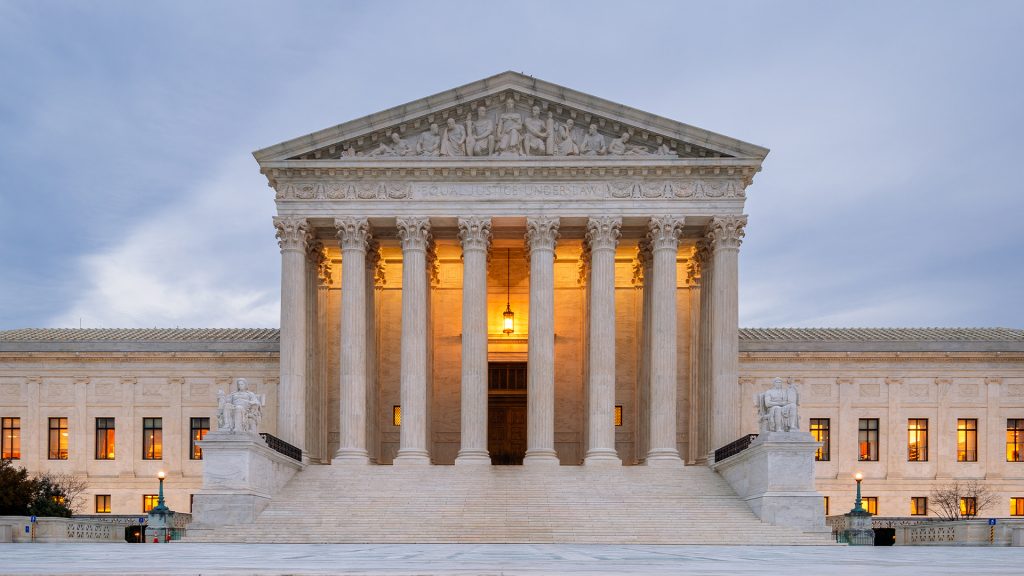‘Shadow docket’: Supreme Court’s emergency rulings mostly favor Trump

Across the street from the U.S. Capitol, the Supreme Court justices discussed whether the Department of Education should be able to lay off hundreds of employees en masse. By a 6-3 vote on Monday, July 14, the court quickly ruled in favor of the Trump administration, allowing the firings to continue.
Why? The court’s majority didn’t say.
Monday’s ruling was the most recent in a fusillade of emergency orders on challenges to some of President Donald Trump’s most controversial policies. Like most of the others, the decision in Trump’s favor offered little insight into the majority’s thinking, prompting a contentious question in the legal community: Does the nation’s highest court owe the people an explanation?
The ‘shadow docket’
Trump has signed 170 executive orders since returning to the White House in January, and many have led to legal challenges. Repeatedly, lower courts have ruled against Trump’s initiatives. But when the administration files emergency appeals, the Supreme Court has almost always sided with Trump, lifting temporary injunctions even as the underlying litigation continues through the lower courts. The cases appear on the court’s emergency docket – dubbed the “shadow docket” by some – which allows a faster, less formal and less transparent process that can be used to make sweeping legal decisions, often with national implications.
Since April 4, this has happened 15 times. The court has allowed the administration to dismiss transgender troops from the military. It has lifted a block on firing tens of thousands of government workers. It has refused to stop Trump from stripping protections from hundreds of thousands of immigrants. These and most of the other decisions came with little or no explanation.
“FIfteen is an unprecedented number compared to every prior presidency,” Georgetown University law professor Stephen Vladeck told NPR. His analysis is corroborated by The Supreme Court Shadow Docket Database, which offers information on every emergency order by the court since 1993.
‘Power, not reason’
In Monday’s emergency ruling on Trump’s deep reductions in headcount of the Department of Education, the Supreme Court overruled the 1st U.S. Circuit Court of Appeals, which had said the mass firings violated due process and the rights of the department’s civil service workers.
The order contained a four-sentence paragraph about the procedure of pausing the First Circuit’s ruling – and not much more.
“What the order did not include was any explanation of why the court had ruled as it did,” journalist Adam Liptak wrote in The New York Times. “It was an exercise of power, not reason.”
However, a 19-page dissent by Justice Sonia Sotomayor, joined by Justices Ketanji Brown Jackson and Elena Kagan, explained why they thought the majority was wrong.
“Secretary Linda McMahon gutted the Department’s work force, firing over 50 percent of its staff overnight,” Sotomayor wrote. “In her own words, that mass termination served as ‘the first step on the road to a total shutdown’ of the Department.”
“This case arises out of the President’s unilateral efforts to eliminate a Cabinet-level agency established by Congress nearly half a century ago,” Sotomayor wrote. “Only Congress has the power to abolish the Department.”
Conservative groups celebrated the court’s decision, even if it lacked a sweeping defense of the majority’s rationale.
“The decision enables the Trump administration to move forward with a sweeping downsizing and reorganization of the Department of Education, consistent with its stated goal of returning education policy to the states,” Erika Donalds and Jessica Hart Steinmann of the America First Policy Institute wrote. “It also sets a strong precedent limiting judicial intrusion into executive workforce decisions, particularly where administrative restructuring reflects lawful policy objectives.”
Former Education Secretary Betsy DeVos, who served in Trump’s first administration, called the decision “a really big and important step in the right direction.”
The Department of Education has “utterly failed in its mission… Ultimately, we have to shut it down,” DeVos told Fox News.
‘Unprecedented uptick’
Historically, the Supreme Court has rarely issued emergency rulings, according to Vladeck, the Georgetown law professor and author of the book “The Shadow Docket.” Most cases were handled through a formal process called the merits docket, where the court hears oral arguments and writes written opinions explaining its decision. This process allows the public to see the legal basis for opinions.
The emergency docket, Vladeck told NPR, was typically used only for crucial cases where time is of the essence, bypassing the formal merits docket track.
“We would only get maybe a handful of these kinds of rulings every term,” Vladeck said. “We’ve seen a remarkable and unprecedented uptick in the volume since President Trump came to office in January and since many of his actions ran into trouble in the lower courts.”
In the past 10 weeks alone, the court issued emergency rulings with no explanation seven times. Each came down in the Trump administration’s favor.
Critics say the lack of explanation leaves lower courts to wonder what the judges were thinking – and how they should apply the rulings in the future, not to mention in the still-pending cases.
“The Supreme Court is not a trial court; it is, by both constitutional design and historical tradition, a court the rulings of which have impacts far beyond the specific parties,” Vladeck wrote in his newsletter, One First. “Given that reality, the Court ought to understand what can go wrong when it fails to provide even a modicum of explanation for its interventions.”
“Second, and more fundamentally,” Vladeck continued, “principled explanations for the Court’s decisionmaking are the primary thing that separates exercises of judicial power from exercises of raw political power.”
The process has also attracted criticism from within, including in Kagan’s 2021 dissent from an opinion that upheld a near-ban on abortion in Texas.
“Today’s ruling illustrates just how far the Court’s ‘shadow-docket’ decisions may depart from the usual principles of appellate process,” Kagan wrote. “It has reviewed only the most cursory party submissions, and then only hastily. … The majority’s decision is emblematic of too much of this Court’s shadow-docket decisionmaking — which every day becomes more unreasoned, inconsistent, and impossible to defend.”





